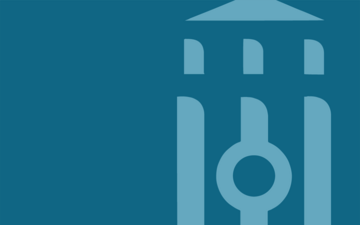Elections in Modern Dictatorships: Why Do Some Autocrats Tie Their Hands by Credible Elections?

Today, most autocracies hold elections. Surprisingly, opposition parties are allowed to participate in such elections despite the presence of electoral manipulation. This seems to contradict our stereotype of authoritarian regimes, where autocrats are seen as essentially repressive and do not allow any dissent against them. Intriguingly, some of those modern autocrats even embark on political reforms that attempt to reduce blatant forms of electoral manipulation, as well as willingly accept the participation of opposition parties. How do authoritarian leaders design elections? What consequences do autocratic elections have on autocratic stability? My new book, The Dictator’s Dilemma at the Ballot Box asks these pertinent questions to systematically explore the logic of authoritarian elections in the modern world.
My intellectual journey into autocratic elections started when I first visited two Central Asian countries – Kazakhstan and Kyrgyzstan – back in December 2008. Despite their numerous similarities after the collapse of the Soviet Union, both countries have drawn distinct regime trajectories: Kazakhstan successfully consolidated authoritarian rule via elections, whereas Kyrgyzstan’s regime stability was seriously undermined by elections. I chatted with citizens in both countries during my fieldwork to find that how they talked about their political leaders was saliently different: Kazakh citizens often expressed positive sentiments toward their president, while Kyrgyz citizens mostly complained about their political leadership. These observations led me to realize a paradox in authoritarian regimes: modern dictators’ fates may not only hinge upon the use of coercive measures, but popular will might also be pertinent in explaining autocratic stability.
The book starts from an observation that autocrats face a dilemma at the ballot box. On the one hand, relatively free and fair elections enable autocrats to receive tangible benefits. Through less manipulated elections, autocrats can demonstrate their strength and popularity effectively by winning big; gather credible information on the distribution of political support; and divide and conquer the opposition camp by forcing opposition parties to decide whether to join such elections. But as elections become less fraudulent, it becomes more difficult for autocrats to win elections overwhelmingly. On the other hand, electoral manipulation enables autocrats to secure election victories but undermines the benefits that elections are expected to bring. In the modern world where autocrats increasingly face strong international constraints that prevent autocrats from canceling and postponing elections, they need to design elections under the pretense of this electoral dilemma. How do autocrats strike a balance between the certainty of winning big and credibility of election results?
My answer to this important puzzle on autocratic elections lies in the amount of resources that dictators can mobilize to induce “voluntary support” from the citizenry. Autocrats who can use abundant financial resources and are armed with well-institutionalized organizations can win elections overwhelmingly. By seeking the benefits that less manipulated elections generate, autocrats have strong incentives to make elections “free and fair” by refraining from using overt electoral fraud and adopting electoral systems with high proportionality. Conversely, when dictators lack such discretionary financial resources and disciplinary organizations, they increase levels of electoral manipulation to secure election victories through blatant electoral fraud and majoritarian electoral systems. In this regard, as a Japanese proverb succinctly told us, “the rich never fight, poverty dulls the wit” in modern dictatorships.
To empirically assess these theoretical expectations, The Dictator’s Dilemma at the Ballot Box triangulates cross-national statistical analyses with new data sets of autocratic elections, various case illustrations from dictatorships around the globe, and structured, focused comparative case studies of Kazakhstan and Kyrgyzstan. Cross-national statistical analyses and various anecdotes of autocracies suggest that autocrats with natural resource endowments and strong party and/or ethnic organizations tend to rely less on electoral manipulation. The cross-national analyses also demonstrate that when dictators fail to deal with the electoral dilemma properly, autocratic elections serve as a window of opportunity for other actors to challenge dictators through coups, protests, and stunning election victories, undermining authoritarian political order. The overall analyses indicate that dictators need to be resourceful as well as possess abundant resources to take advantage of elections in their favor.
The book systematically compares two dictatorships in Central Asia, based upon eight-months fieldwork in which I immersed myself by flying back and forth between the US and the region from 2008 and 2014 – Nazarbaev’s Kazakhstan and Akaev’s Kyrgyzstan. Despite their similarities, why could Nazarbaev use elections as a vehicle of power, whereas Akaev being ousted by elections? To illuminate this question, The Dictator’s Dilemma at the Ballot Box focuses on how both autocrats developed their capabilities to mobilize popular support. In Kazakhstan, Nazarbayev tactfully centralized natural resource management, state apparatus, and party organizations to use those resources primarily for his political purposes, helping him extensively buy off popular support via patronage and pork rather than fraud and force. By contrast, Akaev of Kyrgyzstan gradually lost both monetary and organizational resources to mobilize political support, as he strengthened autocratic rule. This made it difficult for him to derive political compliance and instead forced him to utilize blatant electoral manipulation for political survival. Excessive electoral manipulation eventually backfired on him, leading to the so-called Tulip Revolution in the aftermath of the 2005 parliamentary elections.
My book suggests that autocrats must strategically design elections according to their needs and capabilities. This means that, even if autocrats allow relatively free and fair elections, such elections might be just an artifact of strategic calculations made by autocrats and therefore an indication of the absence of blatant manipulation may not be a good prospect for future democratic transitions. Nevertheless, the book also suggests that we may not need to be too pessimistic about the prospect of democracy in the modern world. As the book suggests, dictators’ calculus on autocratic elections is made on a very slippery slope between regime consolidation and political instability by striking a balance between their mobilization capabilities and electoral manipulation.
International assistance for democratization and various measures of preventing autocrats from dominating financial and organization resources may be able to change autocratic elections from a locus of consolidating autocratic rule to a window of opportunity to push for democratic transitions. To utilize autocratic elections for a chance to full-fledged democratization, however, existing democracies need to be fully prepared in the first place, by recovering popular trust in democratic institutions, healing political polarization, and resisting authoritarian temptation in an era of democratic backsliding.
This is a guest author post. Masaaki Higashijima is Associate Professor of Political Science at Tohoku University, Japan. He is the author of the new book The Dictator’s Dilemma at the Ballot Box: Electoral Manipulation, Economic Maneuvering, and Political Order in Autocracies , now available in hardcover, paperback, and open access. Start reading today on Fulcrum.




